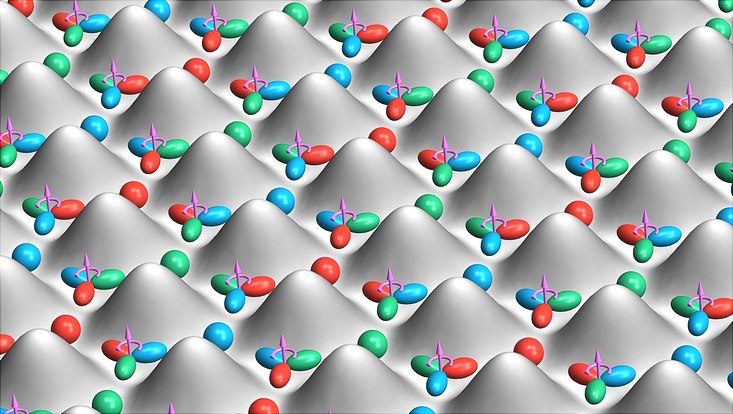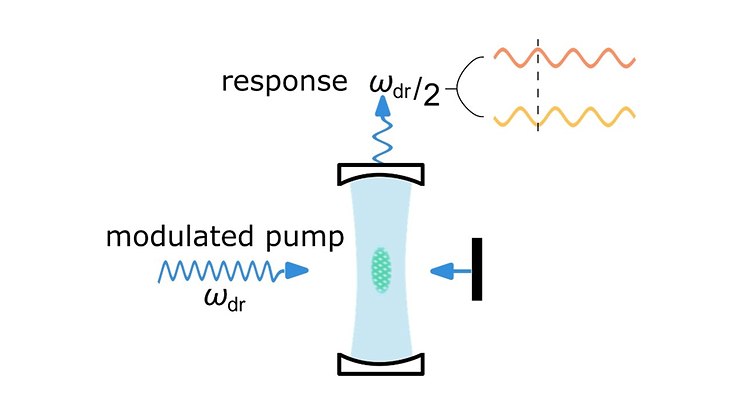Quantum Physics
Ultracold atoms spontaneously set into superfluid rotation
11 August 2021

Photo: AG Hemmerich
Ultracold bosonic atoms filled into the second Bloch band of a hexagonal optical lattice made of three interfering laser beams can form intriguing types of superfluid order. An international team of scientists from SUSTech University, China, Pittsburgh University, USA, and Universität Hamburg, Germany, has succeeded in observing a spontaneous breaking of time reversal invariance, whereby the atoms are strikingly set into collective rotation. The researchers have now published their findings in Nature magazine.
"The phenomena now observed, although conceptually different, are related to the quantum Hall effect," says Prof. Andreas Hemmerich of the Institute of Laser Physics at Universität Hamburg and researcher in the Cluster of Excellence "CUI: Advanced Imaging of Matter."
In the experiments conducted in Shenzhen in the research group of Prof. Zhifang Xu, which Hemmerich substantially supported with conceptual and technical expertise, ultracold bosonic atoms were prepared in the second Bloch band of a hexagonal optical lattice with a bipartite unit cell (similar to that of boron nitride) and cooled to ultralow temperatures. Below a critical temperature, spontaneous breaking of time reversal symmetry was observed and the atoms were magically set into collective rotation forming an array of microscopic whirls with a common sense of turning, randomly picked by quantum fluctuations.
By basic theoretical considerations, the researcher found that the emergent superfluid order gives rise to a topological excitation spectrum and topological edge states, and hence, although conceptually different, exhibits similarities with the celebrated quantum Hall effect in electronic condensed matter.
Publication
X.-Q. Wang, G.-Q. Luo, J.-Y. Liu, W. V. Liu, A. Hemmerich, Z.-F. Xu
“Evidence for an atomic chiral superfluid with topological excitations”
Nature 596, 227 (2021)
See featured article by Tobias Grass in Physik Journal 20, 20 (2021).


